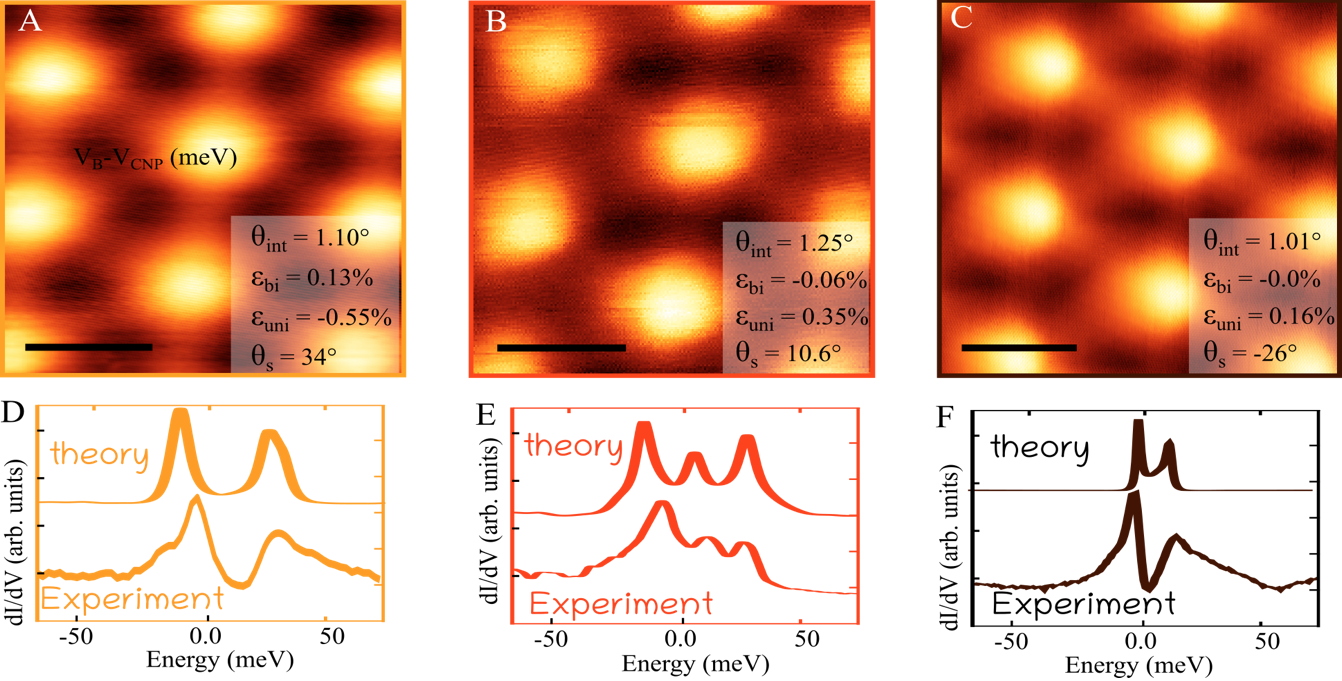Graphene is one of the best electrical conductors because its conducting electrons are very difficult to stop. This is why it appeared very surprising when theoretician predicted that stacking two graphene layers on top of each other would stop electrons owing to the moiré pattern (see figure) that forms when the two layers are rotated with respect to each other. Recent experiments confirmed that this occurs when the rotation angle between the layers is near 1°, the so-called magic angle. With no freedom to move, electrons have no possibility to avoid electric interaction with each other which leads to a variety of new phases that were observed in the material: Mott insulator, superconductor, orbital magnet. Observing such variety of behaviour in a single material is a great excitement for the physics community.
Indeed, this rich physics is difficult to model because it necessitates the description of many particles which behaviour is correlated. This many body problem is one of the most difficult one in modern physics. Facing such a complex problem the usual attitude is to focus on the main parameter controlling the observation and describe its effect. In the present case, the rotation angle has been identified a long time ago. Yet, a strong variability is observed in the experimental behaviour. This is a sign that another parameter is not under control. Biologist and medical researchers often use meta-analysis (combined study of independent research) to resolve this kind of issues because they naturally deal with extraordinary complex problems.
Following this example, we performed a meta-analysis of existing scanning tunnelling microscope (STM) studies of magic angle twisted graphene layers showing that the relative deformations of one layer with respect to each other (heterostrain) explains quantitatively the variability. Even more, this study proves that heterostrain determines the physics of the system near the magic angle. As a consequence, accounting for heterostrain could prove crucial to understand the observed correlated electron physics. More generally, our study shows that meta-analysis can be very useful in condensed matted physics.

Figure: STM images of various samples (A, B, C) are undistinguishable with naked eye. (the scale is the same on the three images). A detailed analysis allows to determine precisely the relative arrangement of the layers (rotation and heterostrain). The inset show that it slightly differs from one sample to another which has important consequences on electronic properties (D, E, F). This is well accounted by theory if heterodeformations are considered.